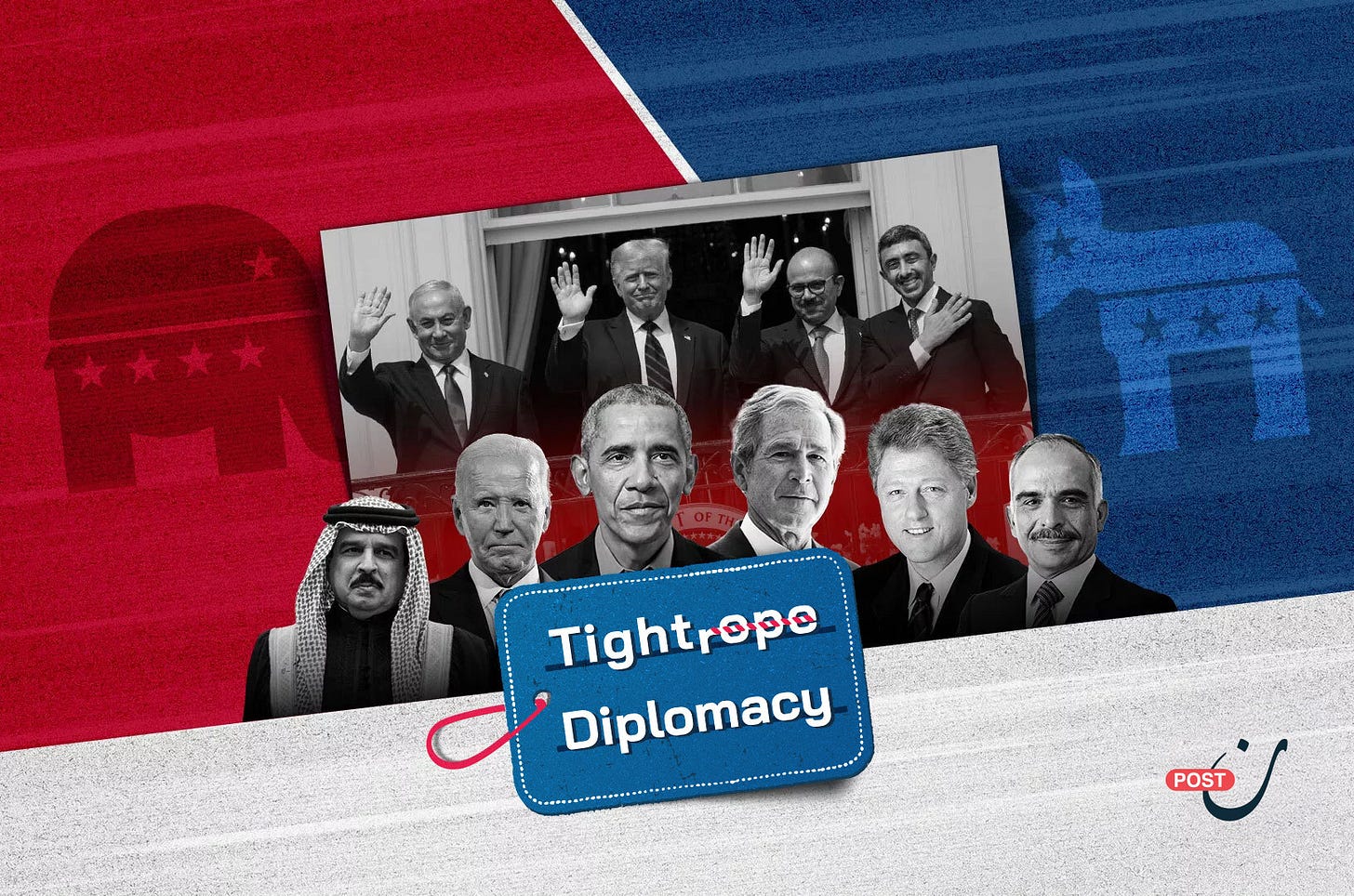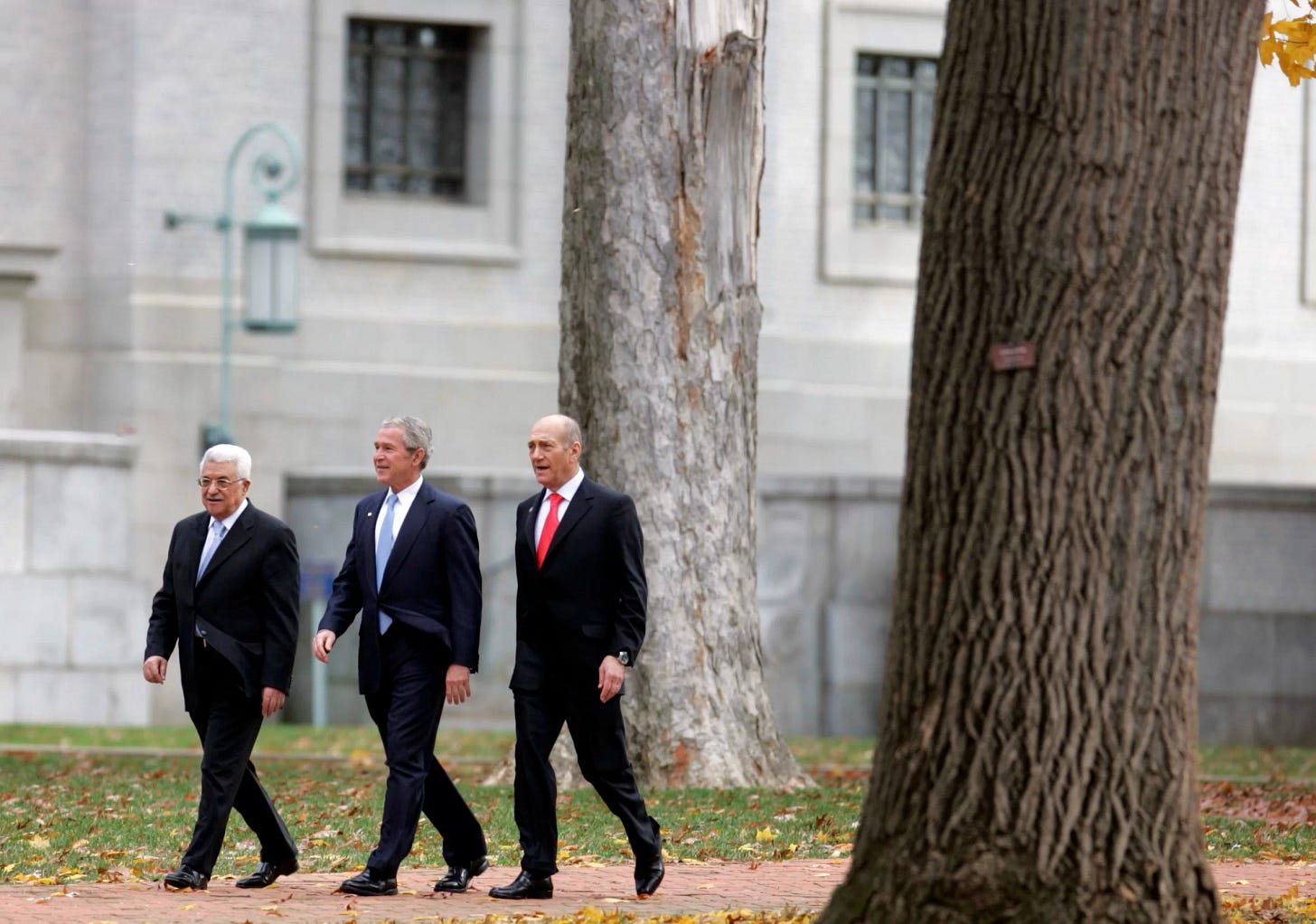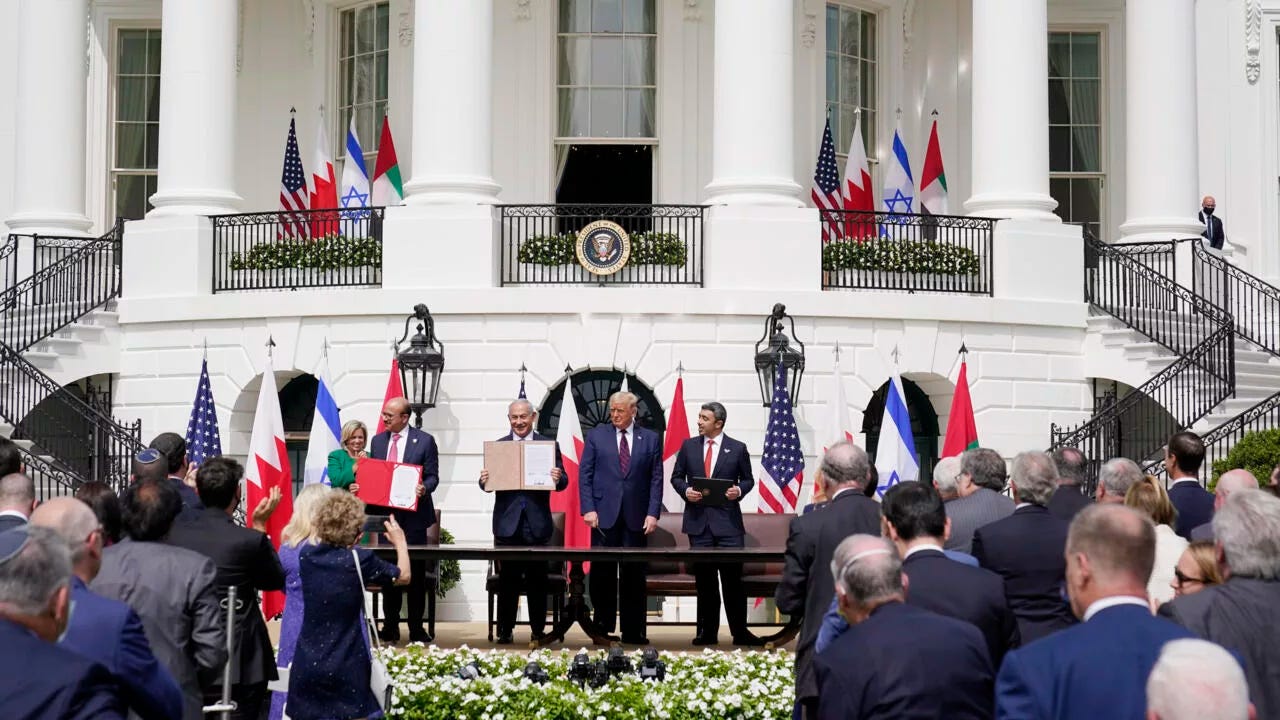America and Arab-Israeli Peace: How Washington Planted the Seeds of Normalization in the Middle East
At the turn of the 20th and 21st centuries, formal Arab-Israeli relations witnessed a profound transformation. Once marked by enmity toward the Zionist project, several Arab regimes transitioned into open normalization—hosting Israeli delegations and flying the Israeli flag over official venues. Yet, this shift did not occur suddenly or without precedent; rather, it revealed decades of covert cooperation between Arab governments and Israel.
As part of our “Two-Rope Diplomacy” dossier, this article examines the role successive U.S. administrations have played in coaxing Arab regimes toward normalization. It explores how partisan American politics—both Republican and Democrat—shaped this trajectory, and how certain governments aligned with the Zionist project, often at odds with their own people's interests, from the early 1990s to the present day.
Clinton: Many Birds, One Stone
The Wadi Araba Agreement, signed on October 26, 1994, was not a spontaneous development but the culmination of years of clandestine understandings between King Hussein of Jordan and Israeli officials. Contrary to the narrative that Oslo was the driving force behind Jordan’s peace treaty—crediting then U.S. President Bill Clinton—the King had long sought to secure Jordan’s borders from Palestinian fighters even before Israeli militias emerged as a threat.
Initially, it was London—not Washington—that hosted secret meetings between the King and Israeli officials, particularly after the 1967 war. Still, the United States was never far from these discussions, often represented by the CIA or special envoys facilitating the meetings.
American administrations consistently recognized Jordan’s centrality to Middle East stability and Israeli security, leveraging every opportunity—from Camp David in 1978 under Jimmy Carter, to secret talks in 1987 during Ronald Reagan’s tenure—to bring Jordan closer to formal peace. With Egypt’s Sadat failing to broaden normalization, the U.S. saw Jordan as the next viable candidate.
Clinton’s administration seized a strategic moment. Jordan was under economic pressure, burdened by $700 million in debt and suffering from severed ties and frozen aid due to its support for Saddam Hussein during the Gulf War. The U.S. made arms deals—including F-16 fighter jets—conditional upon a peace treaty. Jordan, unable to resist amid regional polarization and a spiraling arms race, acquiesced.
Thus, Washington cemented its role as the true architect of Jordanian-Israeli normalization, reaping the fruits in Wadi Araba.
Clinton also spearheaded efforts with Syria and Lebanon. According to White House archives, he held over 175 direct communications with Middle Eastern leaders and entities. His presidency saw both secret and public meetings between Israeli and Arab officials at the White House, and he launched peace initiatives that still echo in the region.
Toward the end of his presidency, Clinton hosted Syrian Foreign Minister Farouk al-Sharaa and Israeli Prime Minister Ehud Barak in Shepherdstown (1999–2000) in a bid to forge Syrian-Israeli peace. Earlier talks between Hafez al-Assad and Israel (until 1996) had already been mediated directly by U.S. Secretary of State Warren Christopher, but faltered over disputes concerning the occupied Golan Heights.
The immediate cause for failure, however, lay in Clinton’s reluctance to offer Assad sufficient incentives—due in part to domestic opposition from Republican and pro-Israel lobbies, which viewed Syria as a "state sponsor of terrorism," unlike Egypt or Jordan.
Clinton also attempted outreach to Lebanon, though focused less on the government and more on armed factions like Hezbollah. His administration brokered the 1996 “Grapes of Wrath” understandings, wherein Israel and Hezbollah agreed to refrain from targeting civilians. This pragmatic conflict management underscored the administration’s preference for containment over resolution in Lebanon’s complex landscape.
The U.S. saw Lebanon through the lens of Syrian influence due to Syria’s military presence and political clout, hence linking Lebanese engagement to progress with Syria. When Syrian-Israeli talks collapsed, Lebanon was sidelined.
Still, Lebanon participated in the 1991 Madrid Conference’s multilateral “Steering Group,” which tackled issues such as borders, refugees, and natural resources. This track stalled after Yitzhak Rabin’s 1995 assassination and only briefly revived in 2000 by Madeleine Albright and Russian Foreign Minister Igor Ivanov, before the Second Intifada halted all progress.
Clinton’s indirect courtship of Saudi Arabia also laid the groundwork for future normalization. While Riyadh publicly resisted formal engagement, it quietly endorsed Oslo, Wadi Araba, and the Madrid process.
Clinton paved the way for eventual Saudi alignment through economic integration efforts that included Israel. The Middle East and North Africa Economic Summits (1994–1997) featured Saudi participation and deepened Riyadh’s influence within the nascent Palestinian Authority via Arab League funding.
The Clinton administration also exploited early Saudi-Iranian tensions and amplified fears of Iranian-linked extremist groups to coax Saudi alignment with U.S.-Israeli objectives. Though covert, this maneuvering bore fruit in the 2002 Arab Peace Initiative, where Saudi Arabia proposed normalization in exchange for an Israeli withdrawal to 1967 borders.
George W. Bush: Normalization Through War
George W. Bush prioritized the “war on terror” over formal Arab-Israeli peace accords. Yet his administration reshaped the region around three pillars: defending pro-peace Arab allies and Israeli interests, isolating regimes obstructing peace, and promoting a U.S.-defined freedom agenda.
While normalization wasn’t explicit policy, Arab states became entwined in broader peace frameworks—via counterterror coalitions or plans like the “Road Map” and the 2002 Arab Peace Initiative.
Bush deepened ties with Jordan, Egypt, and Gulf states, designating them “vital partners” in regional peace and counterterrorism. This alliance targeted Iran and its proxies, even as Washington provided civil society funding and free trade deals, especially with Saudi Arabia, Bahrain, the UAE, and Qatar.
Conversely, Bush escalated pressure on Iraq and Libya, accusing them of terrorism and WMD development—a pretext to eliminate opposition to U.S.-Israel hegemony. This culminated in regime change in Baghdad and disarmament in Tripoli.
The administration was the first to endorse a vision of a “two-state solution” through the “Road Map,” which envisioned a demilitarized Palestinian state. The plan excluded “terrorist” factions and relied on Arab League participation, highlighted by the 2007 Annapolis Conference.
Saudi Arabia’s 2002 peace proposal became a key input into the Road Map. Though not a U.S. creation, it received American backing as a tool to advance regional normalization without direct coercion.
Obama: Arab Spring and Shifting Priorities
Despite lofty hopes, Obama’s Middle East policy was thwarted by Netanyahu’s intransigence, Bush-era legacies, and regional upheavals, most notably the Arab Spring.
Normalization slipped from the agenda as revolutions and civil unrest reshaped U.S. priorities. Yet Israel’s security remained paramount. Rather than initiating new agreements, Obama doubled down on preserving existing ones, especially with Egypt.
Though publicly cautious about Abdel Fattah el-Sisi’s 2013 coup, Obama’s administration quickly re-engaged with Cairo, continuing $1.3 billion in annual military aid, viewing Sinai’s proximity to Israel as vital.
Obama also laid groundwork for Trump’s eventual success via the 2015 Iran nuclear deal. Though it curbed Iran’s nuclear program, it empowered Tehran regionally—alarming Gulf states and nudging them closer to Israel.
To reassure Gulf allies, Obama hosted them at Camp David (2015) and later in Riyadh, signing multi-billion-dollar arms deals. These included a $115 billion package for Saudi Arabia and $33 billion in deals across the Gulf, surpassing Bush-era military commitments.
Trump: Reaping the Harvest
Donald Trump achieved what his predecessors could not: overt normalization between Israel and four Arab states—Bahrain, the UAE, Sudan, and Morocco—through the Abraham Accords.
This breakthrough stemmed from years of U.S. economic pressure, geopolitical engineering, and threats. Trump detached normalization from Palestinian peace, pushing Arab states to act on their own interests—primarily security against Iran.
Secret ties with Israel, especially in the Gulf, became public. The UAE opened a diplomatic office for Israel in 2015 and later received a $23 billion F-35 fighter jet deal. Though the deal stalled under Biden due to concerns over UAE’s China ties, Abu Dhabi renewed its push amid hopes of Trump’s return.
Bahrain’s normalization followed extensive U.S. support during its Arab Spring crackdown. The kingdom hosted the “Peace to Prosperity” conference in 2019, promoting Trump’s “Deal of the Century,” amid a $10 billion Saudi-UAE aid package.
Trump also secured deals with Sudan and Morocco by offering strategic incentives: delisting Sudan from terrorism sponsors and recognizing Moroccan sovereignty over Western Sahara. These transactions exemplify U.S. leverage in brokering peace via political trade-offs.
Trump nearly clinched Saudi normalization with a $110 billion arms deal, only for Biden’s arrival to freeze the process.
Biden: Winds of Change
Joe Biden’s presidency faced criticism for lacking resolve and clarity, struggling with Trump’s legacy and fraught Gulf ties. While his administration sought to advance normalization, Israeli aggression in Gaza (2021, 2023) undermined progress—especially with Saudi Arabia.
Efforts to revive the Iran deal further rattled Gulf allies. Biden’s outreach to Tehran, while easing tensions, exacerbated Riyadh’s fears and delayed full alignment with Israel.

Tensions over oil policy and Yemen further strained U.S.-Saudi relations, though Biden’s 2022 visit to Crown Prince Mohammed bin Salman yielded military and cybersecurity agreements.
Biden also paused major arms deals with the UAE over Beijing and Moscow ties. Relations with Qatar warmed, thanks to its role in the U.S. withdrawal from Afghanistan, irking Abu Dhabi.
Though Biden pledged to deepen the Abraham Accords, shifting global dynamics, Palestinian suffering, and rising multipolar challenges have left his efforts incomplete—and the region in anticipation of a possible Trump return.






